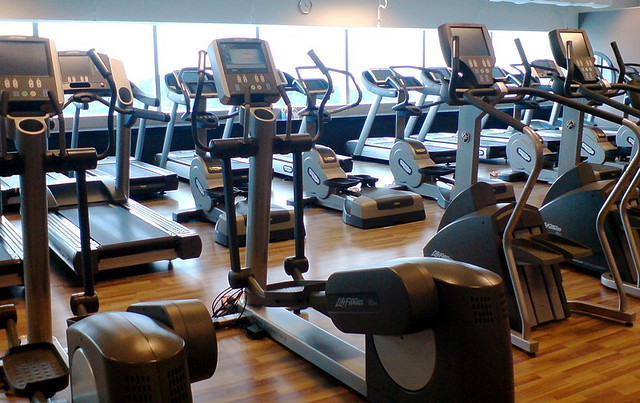From the IU Strength blog
In 2006, defensive lineman Brandon Noble almost lost a leg because of an infection from methicillin-resistant staphylococcus aureus (MRSA), which can spread through locker room contact. Locker rooms are one of the most overlooked health risks for high school, college and even professional athletes, not to mention fitness enthusiasts who use public or private gyms.
Good locker room habits lower the risk of infections that pass from one person to the next, according to Tavio Henson, a strength and conditioning coach at IU Health Sports Performance.
Henson has been convinced of that since his college microbiology class. “We cultured things like barbells, dumbbells and other training equipment,” he says. “It was pretty gross to learn all the things that popped up in that petri dish.”
Henson offers six tips to prevent the spread of infectious diseases with safe practices at the gym.
Shower and wash your hands. Ideally, everyone should shower immediately after working out. When that’s not possible, Henson says you should thoroughly wash your face and hands all the way up to the elbows until you can get to a shower. Use your own soap and never share. He also encourages clients to wear gloves when working out with weights—and wash the gloves immediately after they are used.
Sanitize equipment before and after you use it. “Clean up after yourself, especially on cardio machines,” Henson says. If necessary, take your own towels and/or anti-bacterial solution or wipes.
Don’t leave dirty laundry lying around. “When I was playing college football, we were encouraged to take our laundry home and wash it as soon as possible,” Henson says. Athletes who use equipment (think football) should clean it at least once a week.
Wear flip-flops in locker and shower areas. Buy throw-aways or wash and sanitize them after each use. Locker room floors and showers are loaded with fungi looking for a foot where they can hitch a ride.
Hold teammates accountable. “In college, we called each other down when someone didn’t throw dirty towels where they needed to be,” says Henson. “Accountability helps everyone do the right thing.”
Expect schools, gyms and clubs to follow good sanitation practices. “Any facility where people train needs to be committed to excellence in this area,” says Henson. When a janitorial staff thinks they’ve done enough, sometimes they’re only getting started. How much is enough? Locker rooms should be cleaned and sanitized before, during and after use.
For more information visit http://iuhealth.org/blog/.






